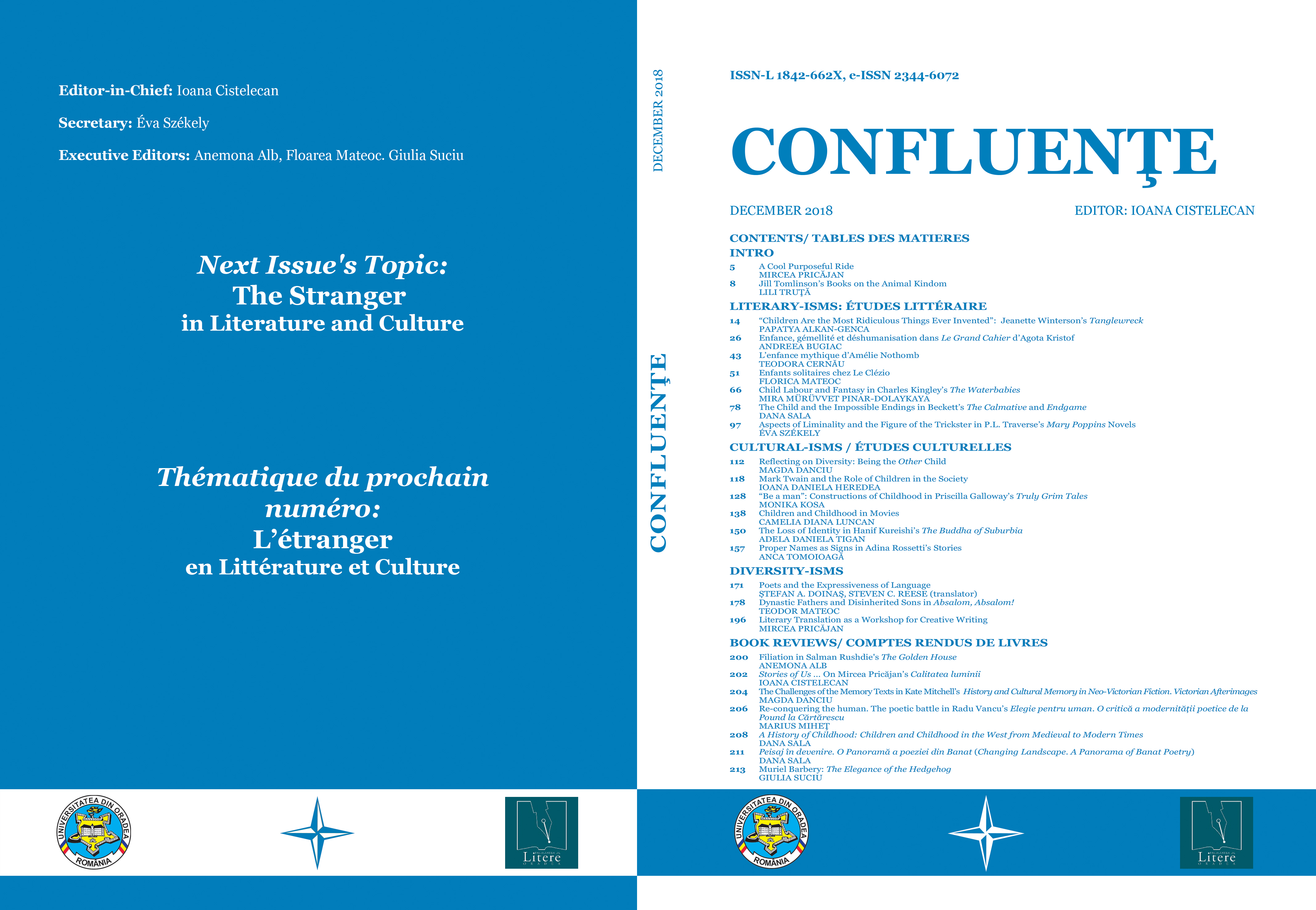The Child and the Impossible Endings in Beckett’s The Calmative and Endgame
The Child and the Impossible Endings in Beckett’s The Calmative and Endgame
The Child and the Impossible Endings in Beckett’s The Calmative and Endgame
Author(s): Dana SalaSubject(s): Language and Literature Studies, Studies of Literature
Published by: Editura Universitatii din Oradea
Keywords: Beckett S.; boyhood; fatherhood; myth (mythos); ending; childhood;
Summary/Abstract: Waiting, even in the theatre of the absurd, could contain the testimony of an existence. Such testimony is expressed in a Story, therefore waiting and its compensatory stories and myths are intrinsically related. For Samuel Beckett, the end of a story as a story is possible, the end of a story as an ending is impossible. The Calmative could be seen as the story Hamm (Endgame) longs to escape into. Unable to move, Hamm longs to find himself in the forests. Of all the characters in Endgame, Hamm is the most aware of the philosophy of the ending. It is the very presence of a boy and boyhood (not in a descriptive way, but as an essential opposition, as a stage of life or of the soul when things could have developed differently) that can join together the theme of ending with the theme of paternity, on one hand, corroborating them with the presence of a Story (and therefore of the myth, too) and the presence of waiting as a way to end the ending, by making through to it (on the other hand). The little boy in Hamm’s story-within-the-play appears to be motherless, his story happens on Christmas, the little boy will be saved from starvation but will not be saved from the condemnation to life. More likely than not, the little boy is Clov at the age of innocence, before being deformed within any co-dependent relationship. Not the fact that the old man in the Calmative is dead is ambiguous, but the stage of his journey after death is ambiguous. The ending of The Calmative is one of the best depiction in world literature about the mystery of a post-mortem existence aware of itself.
Journal: Confluenţe. Texts and Contexts Reloaded
- Issue Year: 2018
- Issue No: 1
- Page Range: 78-96
- Page Count: 15
- Language: English

